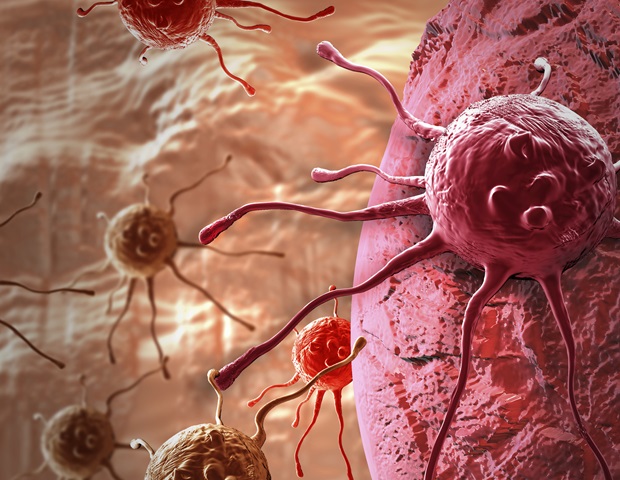
Primary liver cancers ranked as the sixth most commonly diagnosed cancers and the third leading cause of cancer-related death in 2020. Among all primary liver cancers, HCC is the most common cancer, accounting for more than 80% of cases with a 5-year survival rate of less than 10% in Western countries. Despite significant progress in diagnosis and treatments, HCC, often diagnosed at late stages, remains a life-threatening disease with an increasing incidence. Therefore, a better understanding of the underlying mechanisms triggering the early steps of tumorigenesis represents a great interest to predict and propose more effective therapeutic options for liver cancer prevention.
A new review paper published under the leadership of Professor Fouad Lafdil has sought to develop a better understanding of the mechanisms that lead to the malignant transformation of cells, thereby potentially paving the way for the development of new therapeutic strategies.
Numerous studies have classified HCC according to gene expression profiling, immunohistological phenotypes and somatic mutation detection. These studies have revealed various patterns of HCC and next-generation sequencing analyses confirmed by high molecular heterogeneity within the same tumor nodule and various clonal evolution. However, clinical and histological studies revealed that 28 to 50% of HCC express progenitor/stem cell markers. In healthy livers, the progenitor compartment comprises resident liver progenitor cells (LPCs), which are bipotent intrahepatic quiescent cells. They are activated in chronic liver diseases in cases of massive tissue damage or prolonged chronic insult. It alters the proliferative capacities of remaining healthy hepatocytes. They participate in liver regeneration, fibrogenesis and tissue repair.
LPC accumulation, known as a ductular reaction, is frequently observed in diverse chronic liver diseases, such as preneoplastic cirrhotic livers with a worse prognosis. In addition, it is admitted that LPCs have the potential to initiate tumors because of their likelihood to transform into cancer stem cells (CSCs) that ultimately lead to the development of heterogeneous lineages of cancer cells. The underlying mechanisms leading LPC to become tumor-initiating cells is not yet fully understood, but recent studies reported some promising clues that deserve to be further considered.
Due to its enriched cell composition with a high density of immune cells. These include myeloid immune cells such as resident macrophages called Kupffer cells (KC), neutrophils, or lymphoid cells such as NK, NKT, T and B lymphocytes. As such, the liver is considered an immunological organ. During chronic liver diseases, the liver is frequently subjected to a continuous regenerative process occurring in a particularly active inflammatory context.
Increasing evidence suggests that LPC expansion occurs within a particular microenvironment requiring cellular interactions with non-parenchymal and immune cells. Chronic non-resolving inflammation and tissue damage contribute to the activation of LPC compartment and regulate several mechanisms. It leads to their transformation into cancer stem cells (CSC), including metabolic and epigenetic reprogramming pathways.
The researchers have summarized the latest findings that identified molecular inflammatory mechanisms that trigger the LPC growth, accumulation and their transformation into CSCs considered actively participating in the rise of primary liver cancers. These recent findings will open discussion and thought for novel therapeutic strategies to prevent liver cancer initiation.
Regarding therapy research aiming at preventing liver cancer occurrence, maintaining LPC compartment integrity by limiting their activation/transformation could be considered as an attractive therapeutic strategy. The exosome-mediated bidirectional communication between tumor cells and their microenvironment brings novel insight. More research is needed to decipher the underlying molecular mechanisms involved in the early steps of liver cancer development.
Primary liver cancers develop mainly in an inflammatory context, evidenced in virtually all chronic liver diseases. Despite significant advances in liver cancer diagnosis and therapies, the current anticancer treatments have remained poorly effective in the advanced stages of the disease over the past decade. Chronic non-resolving inflammation drives malignant initiation, tumor growth by increasing cancer stemness (self-renewal, EMT, chromosomal instability, immune escape), cancer metastasis and recurrence. The implication of LPC in carcinogenic processes may enlighten the plasticity of these cells with a high capacity to self-renew and their putative malignant features responsible for genetic heterogeneity observed in tumor development.
Dissecting and evaluating the contribution of stromal and immune cells allow an understanding of the intricated crosstalk between these cells localized in the CSC niche. This crosstalk controls the LPC transformation into CSCs and gives rise to HCC and CCA. In this inflammatory context, Th17 cells secreting IL-17 are crucial components among infiltrating immune cells that drive the transformation of LPC into CSC. Therefore, treatment aiming at neutralizing IL-17 production in combination with other therapeutic strategies may constitute a novel strategy for CSC eradication and could prevent liver cancer initiation from LPC origin.
Source:
First Hospital of Jilin University
Journal reference:
Brouillet, A & Lafdil, F., (2023) Risk factors of primary liver cancer initiation associated with tumor initiating cell emergence: novel targets for promising preventive therapies. eGastroenterology. doi.org/10.1136/egastro-2023-100010.










